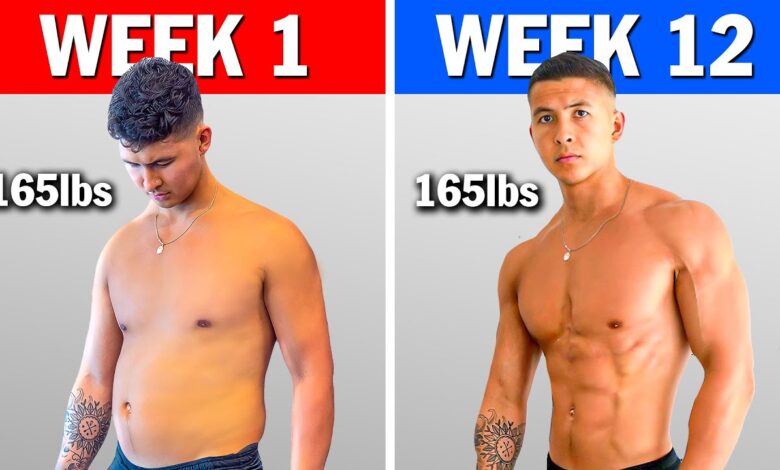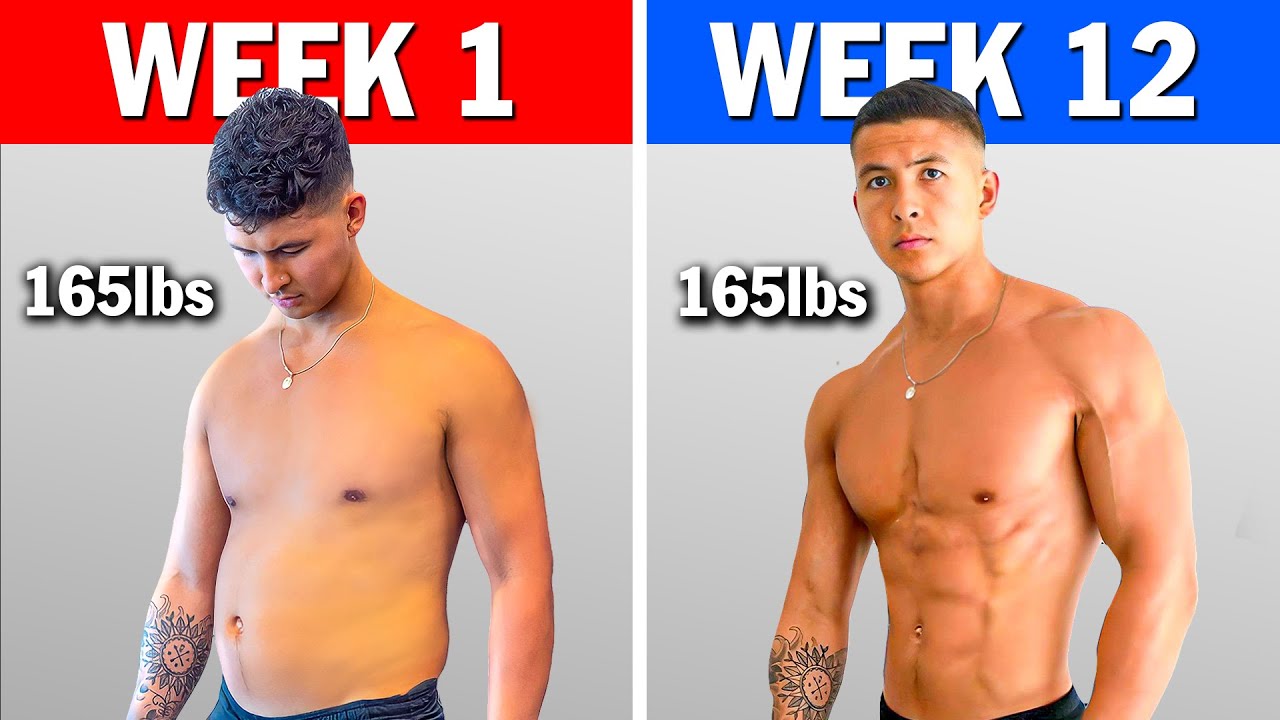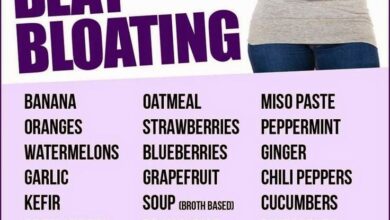
Body Recomposition: Lose Fat, Gain Muscle
The basics of body recomposition how to lose fat gain muscle at the same time – Want to sculpt a leaner, stronger physique? Body recomposition: the basics of how to lose fat gain muscle at the same time, is your answer. It’s about transforming your body composition, not just dropping pounds. Forget about extreme diets and grueling workouts; body recomposition is a balanced approach that helps you achieve a healthier, more defined body.
This journey involves understanding the interplay of nutrition, exercise, and lifestyle factors, all working in harmony to help you reach your fitness goals.
Think of it as a transformation, not just a number on the scale. Instead of solely focusing on weight loss, body recomposition focuses on increasing muscle mass while simultaneously reducing body fat. This results in a more toned, sculpted physique with a higher metabolic rate.
The key is to create a calorie deficit while providing your body with the right nutrients to build muscle. We’ll delve into the details of how to achieve this, covering everything from nutrition and exercise strategies to common pitfalls to avoid.
The Role of Nutrition in Body Recomposition
Body recomposition, the process of simultaneously losing fat and gaining muscle, is heavily influenced by nutrition. A well-structured diet plays a crucial role in providing your body with the necessary nutrients to support muscle growth and fuel your workouts while creating a calorie deficit to promote fat loss.
Importance of a Balanced and Calorie-Controlled Diet
A balanced diet is essential for body recomposition. It ensures your body receives the necessary macronutrients (protein, carbohydrates, and fats) and micronutrients (vitamins and minerals) to support muscle growth, energy production, and overall health. Calorie control is also critical for fat loss.
By consuming fewer calories than you burn, you create a calorie deficit, which forces your body to tap into stored fat for energy.
Sample Meal Plan for Body Recomposition
A sample meal plan for body recomposition should be tailored to your individual needs and preferences. However, a general guideline for macro-nutrient distribution might look like this:
- Protein:1.6-2.2 grams per kilogram of body weight. This range provides ample protein for muscle growth and repair.
- Carbohydrates:2-3 grams per kilogram of body weight. This amount provides energy for workouts and supports overall health.
- Fats:0.5-1 gram per kilogram of body weight. Healthy fats are essential for hormone production and overall health.
Here’s a sample meal plan based on this macro-nutrient distribution, assuming a person weighs 70 kg (154 lbs):
| Meal | Food | Protein (g) | Carbohydrates (g) | Fats (g) |
|---|---|---|---|---|
| Breakfast | 2 cups oatmeal with 1 scoop protein powder, 1/4 cup berries, and 1/2 tablespoon almond butter | 30 | 50 | 10 |
| Lunch | 4 oz grilled chicken breast with 1 cup brown rice and 1 cup steamed vegetables | 40 | 50 | 5 |
| Dinner | 4 oz salmon with 1 cup quinoa and 1 cup roasted vegetables | 40 | 40 | 10 |
| Snack | Protein shake with 1 banana | 20 | 30 | 5 |
Significance of Protein Intake, The basics of body recomposition how to lose fat gain muscle at the same time
Protein plays a vital role in muscle growth and repair. During exercise, muscle fibers are broken down. Protein provides the building blocks for repairing and rebuilding these fibers, leading to muscle growth.
“Adequate protein intake is crucial for achieving optimal body recomposition.”
Exercise Strategies for Body Recomposition
Body recomposition is the process of simultaneously losing fat and gaining muscle. It requires a strategic approach that combines both resistance training and cardio exercise. This combination is essential for optimizing your body’s composition, promoting fat loss, and building lean muscle mass.
Resistance Training for Muscle Growth and Metabolism
Resistance training plays a crucial role in body recomposition by stimulating muscle protein synthesis, which leads to muscle growth. This process is essential for increasing your metabolism and burning more calories, even at rest. Resistance training involves exercises that challenge your muscles against resistance, such as lifting weights, using resistance bands, or performing bodyweight exercises.
These exercises create microscopic tears in your muscle fibers, which trigger a repair process that results in muscle growth.Here are the benefits of resistance training for body recomposition:* Increased Muscle Mass:Resistance training directly stimulates muscle protein synthesis, leading to increased muscle mass.
Elevated Metabolism Muscle tissue is more metabolically active than fat tissue, meaning it burns more calories at rest. Increased muscle mass translates to a higher resting metabolic rate, leading to increased calorie expenditure throughout the day.
Body recomposition, the art of simultaneously shedding fat and building muscle, requires a strategic approach. It’s not just about hitting the gym; it’s about ensuring consistent progress. To avoid hitting a wall, check out these 6 ways to avoid workout plateaus and consistently progress.
These strategies, from adjusting your training intensity to incorporating new exercises, can help you maintain momentum and achieve your body recomposition goals.
Improved Body Composition By building muscle and losing fat, resistance training helps you achieve a more favorable body composition.
Enhanced Strength and Power Resistance training improves your overall strength and power, making everyday activities easier and enhancing your athletic performance.
Improved Bone Density Resistance training puts stress on your bones, promoting bone growth and density, which is crucial for preventing osteoporosis.
Frequency, Intensity, and Duration of Resistance Training
The frequency, intensity, and duration of your resistance training sessions are crucial for achieving optimal results.* Frequency:Aim for 2-3 resistance training sessions per week, focusing on different muscle groups each session. This allows for adequate recovery between workouts.
Intensity Choose weights that challenge you but allow you to maintain good form for 8-12 repetitions per set.
Duration Each resistance training session should last for 45-60 minutes, including warm-up and cool-down.
Cardiovascular Exercise for Fat Loss
Cardiovascular exercise, or cardio, is essential for burning calories and promoting fat loss. It involves activities that elevate your heart rate and improve your cardiovascular health. Here are the benefits of cardio for body recomposition:* Increased Calorie Expenditure:Cardio helps you burn calories, creating a calorie deficit that is essential for fat loss.
Improved Cardiovascular Health Regular cardio exercise strengthens your heart and lungs, reducing your risk of heart disease, stroke, and other cardiovascular problems.
Enhanced Fat Oxidation Cardio promotes fat oxidation, meaning your body burns more fat for energy.
Frequency, Intensity, and Duration of Cardio
The frequency, intensity, and duration of your cardio sessions should be adjusted based on your fitness level and goals.* Frequency:Aim for 3-5 cardio sessions per week, lasting for 30-60 minutes each.
Intensity Moderate-intensity cardio, such as brisk walking, cycling, or swimming, is generally recommended for body recomposition.
Body recomposition is all about finding the right balance between calorie intake and exercise. It’s about fueling your workouts while creating a calorie deficit for fat loss. And what better way to motivate yourself than with a killer workout playlist?
Check out workout playlist says for some awesome music to get you pumped. Once you’ve got the music going, you’ll be ready to tackle your workouts and see those results!
Duration Each cardio session should last for 30-60 minutes, depending on your intensity level.
Sample Exercise Program for Body Recomposition
Here is a sample exercise program that incorporates both resistance training and cardio for body recomposition:* Day 1:Resistance Training (Upper Body)Chest, shoulders, triceps, and biceps.
-
Day 2 Cardio
- 30-45 minutes of moderate-intensity exercise, such as brisk walking, cycling, or swimming.
- Legs, glutes, and hamstrings.
- 30-45 minutes of moderate-intensity exercise.
- A full-body workout incorporating exercises for all major muscle groups.
Day 3 Rest.
Day 4 Resistance Training (Lower Body)
Day 5 Cardio
Day 6 Rest.
Day 7 Resistance Training (Full Body)
Important Considerations:* Warm-up and Cool-down:Always warm up before each workout with 5-10 minutes of light cardio and dynamic stretching. Cool down with 5-10 minutes of static stretching.
Listen to Your Body Pay attention to your body’s signals and adjust your workout intensity and duration as needed.
Progressive Overload To continue making progress, gradually increase the weight, reps, or sets you lift, or the intensity and duration of your cardio sessions.
Variety Incorporate different exercises into your routine to challenge your muscles and prevent plateaus.
Consistency Consistency is key for achieving results. Stick to your workout schedule as much as possible.
Body recomposition is all about striking a balance between losing fat and building muscle. It’s a journey that requires patience, consistency, and a good understanding of your body’s needs. A key factor in achieving this is your VO2 max, which is a measure of your body’s ability to use oxygen during exercise.
Learning what is VO2 max and how can you improve it can help you maximize your efforts towards body recomposition, as a higher VO2 max means your body can burn more calories and recover faster, making both fat loss and muscle gain more efficient.
Key Factors Influencing Body Recomposition

While diet and exercise are the cornerstones of body recomposition, several other factors play a crucial role in determining your success. Understanding these factors and how they influence your body’s response to your efforts can significantly impact your progress and overall well-being.
Genetics and Individual Differences
Genetics play a significant role in body recomposition, influencing factors such as metabolic rate, muscle growth potential, and body fat distribution.
- Metabolic Rate:Individuals inherit different metabolic rates, affecting how quickly they burn calories at rest. A higher metabolic rate can make it easier to lose fat, while a lower metabolic rate may require more effort to achieve similar results.
- Muscle Growth Potential:Genetic factors influence muscle fiber type and growth potential. Some individuals naturally possess more fast-twitch muscle fibers, which are better suited for building muscle mass, while others have more slow-twitch fibers, which are more resistant to fatigue but have lower growth potential.
- Body Fat Distribution:Genetics can influence where your body stores fat. Some individuals tend to store fat in their abdomen, while others store it in their hips and thighs. This can impact how easily you lose fat in specific areas.
The Impact of Sleep Quality and Stress Management
Sleep quality and stress management are crucial for optimal body recomposition. These factors influence hormone levels, which directly affect your metabolism, muscle growth, and fat storage.
- Hormonal Imbalances:Chronic sleep deprivation and stress can lead to increased cortisol levels, a hormone that promotes fat storage and muscle breakdown. Conversely, adequate sleep and stress management promote the production of growth hormone, which is essential for muscle growth and fat loss.
- Metabolic Regulation:Sleep deprivation can disrupt your body’s natural metabolic rhythms, leading to increased hunger, cravings, and decreased insulin sensitivity. This can make it harder to manage your calorie intake and achieve your body composition goals.
Consistency and Patience
Body recomposition is a journey, not a sprint. It requires consistent effort over time. While you may see initial progress, achieving long-term, sustainable changes requires patience and dedication.
- Sustainable Habits:Instead of focusing on quick fixes or fad diets, prioritize building sustainable habits that you can maintain over time. This includes consistent exercise, a balanced diet, adequate sleep, and stress management techniques.
- Progress Tracking:Regularly track your progress to stay motivated and identify areas for improvement. This could include tracking your weight, body measurements, or taking progress photos. Remember that progress is not always linear, and setbacks are part of the process. Focus on the overall trend and celebrate your milestones along the way.
Common Mistakes to Avoid During Body Recomposition
Body recomposition is a challenging but rewarding journey. It requires patience, consistency, and a deep understanding of the process. However, many individuals make common mistakes that hinder their progress. These mistakes can range from dietary missteps to overtraining and inadequate rest.
By avoiding these pitfalls, you can optimize your body recomposition journey and achieve your desired results.
Nutritional Mistakes
Many individuals make nutritional mistakes that can derail their body recomposition goals. Here are some common pitfalls to avoid:
- Crash Dieting:Crash diets are characterized by drastic calorie restriction and often involve the elimination of entire food groups. While they may lead to rapid weight loss initially, they are unsustainable and can have negative consequences for your health and metabolism.
These diets can lead to nutrient deficiencies, muscle loss, and a decrease in your metabolic rate, making it harder to maintain weight loss in the long run.
- Skipping Meals:Skipping meals can disrupt your hormonal balance and lead to increased hunger and cravings. It can also lead to overeating later in the day. Consistent meals throughout the day are crucial for maintaining stable blood sugar levels and supporting optimal energy levels.
- Insufficient Protein Intake:Protein is essential for muscle growth and repair. Insufficient protein intake can hinder muscle growth and lead to muscle breakdown, especially during periods of calorie restriction. Aim for a protein intake of 1.6-2.2 grams per kilogram of body weight per day to support muscle growth and repair.
- Overconsumption of Processed Foods:Processed foods are often high in calories, unhealthy fats, and added sugar, which can contribute to weight gain and hinder body recomposition progress. Focus on consuming whole, unprocessed foods, such as fruits, vegetables, lean proteins, and whole grains.
Exercise Mistakes
Exercise is a crucial component of body recomposition. However, common mistakes can hinder your progress and lead to injury. Here are some exercise mistakes to avoid:
- Overtraining:Overtraining occurs when you push your body too hard without allowing for adequate rest and recovery. It can lead to muscle fatigue, injuries, and a decrease in performance. Listen to your body and take rest days when needed.
- Lack of Variety:Performing the same exercises repeatedly can lead to plateaus and boredom. Incorporate variety into your workouts by including different types of exercises, such as cardio, strength training, and flexibility exercises.
- Ignoring Form:Proper form is essential for maximizing results and preventing injuries. Focus on performing exercises with proper technique and don’t compromise form for weight.
- Neglecting Rest and Recovery:Rest and recovery are just as important as exercise. Adequate sleep, proper nutrition, and active recovery strategies like stretching and foam rolling are crucial for muscle growth and repair.
Tracking Progress and Making Adjustments: The Basics Of Body Recomposition How To Lose Fat Gain Muscle At The Same Time
Tracking your progress is essential for maintaining motivation and ensuring your body recomposition plan is effective. Regularly monitoring your body composition changes and identifying plateaus allows you to make necessary adjustments to optimize your results.
Methods for Tracking Body Composition Changes
Regularly tracking your body composition changes provides valuable insights into your progress. Several methods can be employed to monitor these changes:
- Body Fat Percentage:Measuring body fat percentage using methods like bioelectrical impedance analysis (BIA) or skinfold calipers provides a more accurate picture of your body composition than solely relying on weight. BIA devices send a weak electrical current through your body, measuring resistance to estimate body fat and muscle mass.
Skinfold calipers measure the thickness of subcutaneous fat at specific body locations to estimate overall body fat percentage.
- Circumference Measurements:Taking measurements of your waist, hips, thighs, and arms can help track changes in muscle size and fat loss. Consistent measurements over time provide a visual representation of your progress and can help identify areas where you are experiencing the most significant changes.
- Progress Photos:Taking progress photos at regular intervals can be a powerful visual tool for tracking your progress. By comparing photos taken at different stages of your journey, you can see the changes in your body shape and size, providing motivation and a tangible representation of your hard work.
Identifying and Addressing Plateaus
Plateaus are inevitable in any fitness journey. When you reach a plateau, your body has adapted to your current training and diet, and further progress requires adjustments.
- Analyze Your Training:If you’ve been hitting a plateau, it’s time to evaluate your training program. Consider increasing the intensity, duration, or frequency of your workouts. You can also try incorporating new exercises or changing the order of your workouts to challenge your muscles in different ways.
- Review Your Nutrition:A plateau can also be a sign that your calorie intake or macronutrient ratios need adjustment. If you’re not consuming enough calories to support muscle growth or are not getting enough protein, your body may not be able to rebuild and grow.
You can adjust your calorie intake based on your activity level and progress, and ensure you’re consuming adequate protein to support muscle growth.
- Adjust Your Rest and Recovery:Adequate rest and recovery are crucial for muscle growth and overall health. If you’re not getting enough sleep or allowing your body to recover properly, you may be hindering your progress. Aim for 7-9 hours of sleep per night and incorporate rest days into your training schedule.
Adapting the Program Based on Individual Needs and Responses
Every individual responds differently to training and nutrition programs. Flexibility and adaptability are crucial for achieving long-term success.
“Your body is your laboratory, and you are the scientist. Experiment, observe, and adjust your approach based on your unique needs and responses.”
- Listen to Your Body:Pay attention to how your body feels during and after workouts. If you’re experiencing excessive fatigue, pain, or discomfort, it’s a sign that you may need to adjust your training program.
- Monitor Your Progress:Regularly track your progress using the methods discussed earlier. This will help you identify areas where you are making progress and areas where you may need to make adjustments.
- Seek Professional Guidance:Consulting with a certified personal trainer or registered dietitian can provide valuable guidance and support in adapting your body recomposition program to your individual needs and goals.
Real-World Examples and Case Studies
Seeing the results of others who have successfully undergone body recomposition can be incredibly motivating. It demonstrates that achieving this goal is possible and provides valuable insights into the process. These success stories offer a glimpse into the dedication, challenges, and triumphs that individuals face on their journey.
Success Stories and Strategies
Here are some examples of individuals who have achieved successful body recomposition, showcasing their goals, strategies, and results:
| Name | Goal | Strategies | Results |
|---|---|---|---|
| Sarah | Gain muscle and lose fat to improve overall fitness and body composition. | Followed a balanced diet with a slight calorie deficit, incorporated strength training 3-4 times per week, and prioritized sleep and recovery. | Lost 10 pounds of fat and gained 5 pounds of muscle in 6 months. |
| John | Increase muscle mass and reduce body fat percentage for better athletic performance. | Focused on a calorie surplus with adequate protein intake, engaged in intense weightlifting routines, and incorporated high-intensity interval training (HIIT). | Gained 15 pounds of muscle and reduced body fat percentage by 5% in 8 months. |
| Emily | Improve body composition and increase energy levels. | Adopted a balanced diet with an emphasis on whole foods, engaged in regular cardio and strength training, and prioritized stress management techniques. | Lost 8 pounds of fat, gained 3 pounds of muscle, and reported increased energy levels and improved sleep quality. |
Challenges and Triumphs
Individuals who have successfully undergone body recomposition often face various challenges:* Maintaining consistency:Adhering to a strict diet and exercise routine over an extended period can be challenging, requiring discipline and commitment.
Balancing macros Calculating and tracking macronutrients can be time-consuming and require careful planning.
Dealing with plateaus Progress may stall at times, requiring adjustments to diet, exercise, or other factors.
Managing stress and fatigue Balancing a demanding training regimen with work, family, and other commitments can lead to stress and fatigue.Despite these challenges, individuals often experience significant triumphs:* Improved body composition:Achieving a more lean and muscular physique is a rewarding accomplishment.
Enhanced fitness and performance Increased strength, endurance, and overall fitness levels can lead to improved performance in various activities.
Boosted confidence and self-esteem Witnessing positive changes in their bodies and abilities can significantly boost confidence and self-esteem.
Improved health and well-being Body recomposition can positively impact various aspects of health, including reduced risk of chronic diseases and improved mental well-being.
Epilogue
Body recomposition is a journey, not a destination. It requires patience, consistency, and a willingness to adapt. By understanding the principles of body recomposition, you can embark on a transformative path towards a healthier, stronger, and more sculpted you.
Remember, it’s about finding a sustainable approach that fits your lifestyle and goals. With dedication and the right strategies, you can achieve the body you desire and experience the many benefits of body recomposition.






